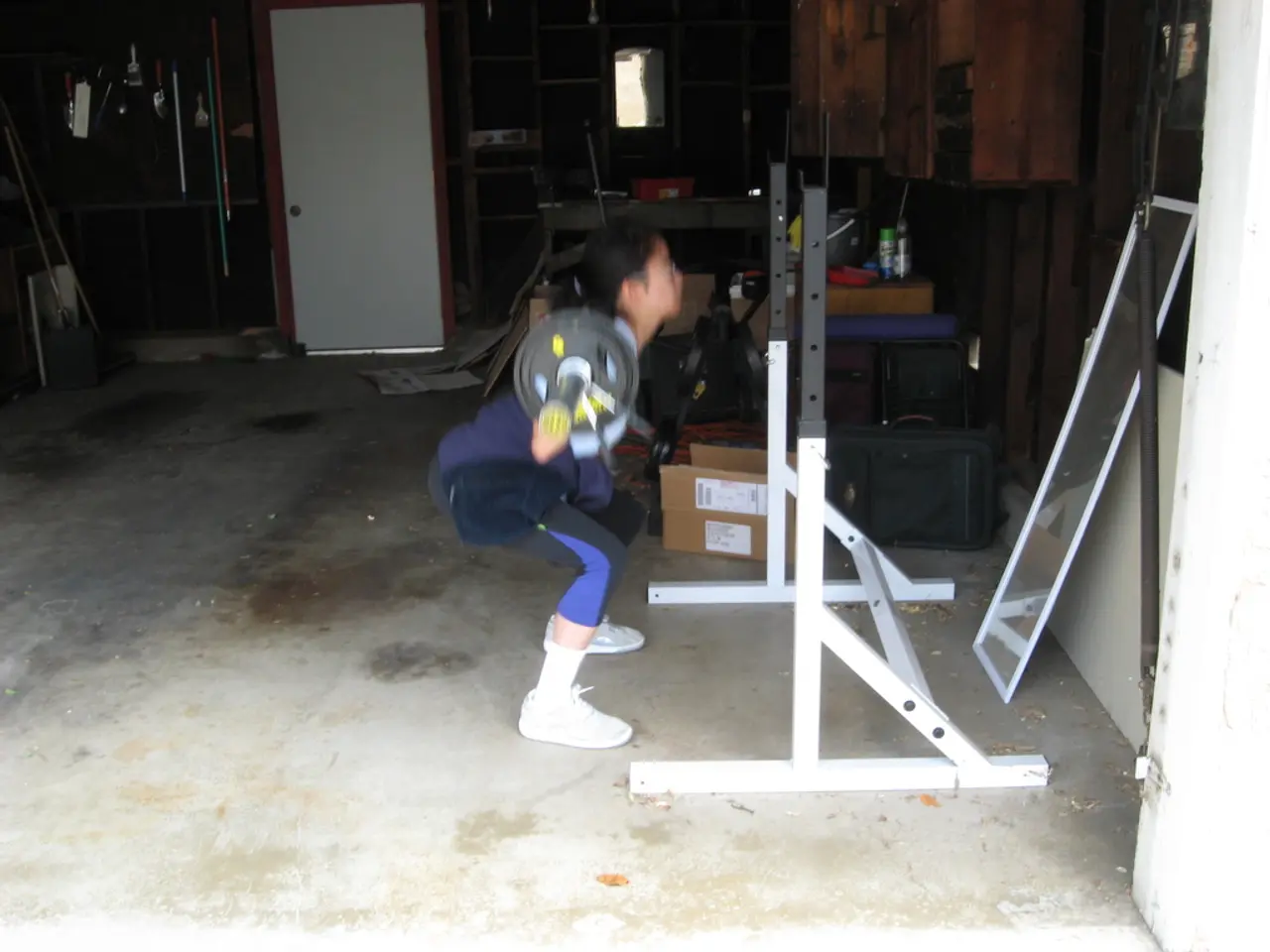Squatting consecutively without a pause indicates a level of strength greater than many individuals aged 50 and above in relation to this exercise.
The Four-Squat Test is an effective way to evaluate lower body strength, balance, mobility, and power. This test sequence, while not standardized under one name, is a popular choice among fitness enthusiasts and practitioners.
The test begins with the Bodyweight Squat, a basic air squat that focuses on full depth and control to assess baseline mobility and endurance. Proper form involves feet roughly shoulder-width apart, chest up, and a slight pushback of the hips while bending the knees.
Next is the Goblet Squat, where a dumbbell or kettlebell is held at chest height to add load and core challenge while maintaining an upright torso. This variation helps to build core stability and quad activation.
The Barbell Back Squat follows, with a barbell placed on the upper back to increase load progressively and assess maximal strength or endurance. This stage of the test typically involves sets of 12-15 reps, with a 90-second rest between sets to focus on technique.
The final stage is the 1RM Deep Squat Test, where a one-repetition maximum (1RM) deep squat is performed following a warm-up and incremental loading protocol to assess maximal lower body strength. Proper form requires deep squats to at least parallel, maintaining trunk stability.
This sequence provides a comprehensive challenge to the lower body musculature, allowing practitioners to assess lower body strength from endurance and control to maximal strength. Rest intervals between escalating loads or sets are 2–4 minutes to allow recovery, and warm-up with lighter sets is recommended before attempting maximal strength tests.
The Four-Squat Test offers numerous benefits, including reduced injury risk, improved balance, boosted muscle endurance, better power output, increased confidence, and independence through functional fitness. It's a test that demonstrates that age is just a number when it comes to strength, as it challenges individuals of all ages to push their limits and maintain their physical fitness.
By completing the Four-Squat Test, individuals can reveal their current level of lower body strength, which is a crucial indicator of long-term health and independence. Neglecting to regularly challenge lower body strength can lead to a loss of muscle, power, and joint stability, making the Four-Squat Test an essential tool for maintaining a fit and active lifestyle.
- Engaging in the Four-Squat Test not only evaluates lower body strength and balance, but also boosts mental health by promoting confidence and independence.
- The sequence of exercises in the fitness-and-exercise program, including the Goblet Squat and Barbell Back Squat, aims to enhance health-and-wellness by improving core stability, muscle endurance, and power output.
- In the realm of science, the Four-Squat Test serves as a valuable tool for assessing the fitness level of an individual, helping to reduce injury risk and maintain long-term health and fitness, particularly in relation to lower body strength.




